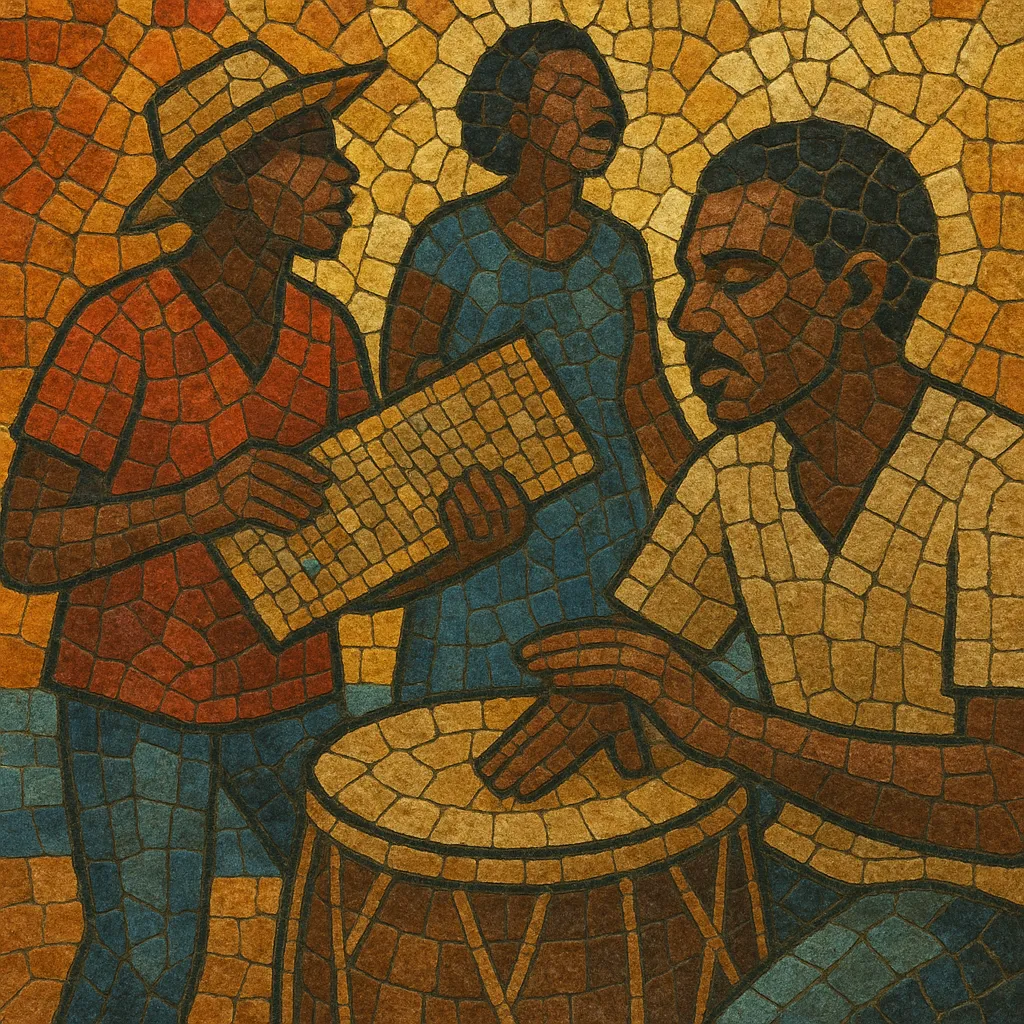Maloya is a drum-and-voice–driven music and dance tradition from Réunion Island in the Indian Ocean. It emerged among enslaved Malagasy and East African peoples on sugar plantations and later among indentured laborers, becoming a vehicle for memory, ritual, and resistance.
Its sound centers on earthy percussion (notably the deep, barrel-like roulèr drum and the grain-filled kayamb shaker), call-and-response singing in Réunion Creole, and trance-inducing, cyclical rhythms. Melodies tend to be modal and harmonically sparse, with the groove and collective chant taking precedence over chord changes.
Beyond the village and ritual context (such as the syncretic servis kabaré ceremonies), maloya became a modern emblem of Réunion identity and political expression. In 2009, UNESCO inscribed maloya on the Representative List of the Intangible Cultural Heritage of Humanity.
Maloya took shape on Réunion during the era of slavery, forged by Malagasy and East African communities and later shaped by South Asian (especially Tamil) indentured workers. It blended work-song practices, call-and-response chant, and communal dance with ritual functions linked to ancestor veneration (servis kabaré). The core instruments—roulèr, kayamb, pikèr, sati, and bob—created a raw, communal sound designed for open-air gatherings.
Under colonial and departmental authorities, maloya was long marginalized, sometimes discouraged or restricted because of its association with maroonage, spiritual practice, and later political dissent. Through the mid‑20th century it persisted informally in rural areas and family/ritual settings. In the 1960s–70s, as Réunionese cultural consciousness rose, maloya re-emerged publicly. Artists such as Firmin Viry and Gramoun Lélé helped bring it from backyards to stages, and activists linked it with social struggle and the Parti Communiste Réunionnais. Restrictions gradually eased and the music gained broader acceptance.
From the 1980s onward, artists professionalized the form while safeguarding tradition. Danyèl Waro’s wood-and-skin timbres, poetic Creole lyrics, and hand-built instruments became emblematic. Bands like Ziskakan expanded the palette with additional instruments and arrangements. In 2009, UNESCO recognized maloya as Intangible Cultural Heritage, affirming its central role in Réunion’s identity.
A new generation experiments with maloya’s pulse in dialogue with rock, jazz, reggae, and electronics, giving rise to maloya électrique/électronique. Groups like Lindigo, Christine Salem, and others maintain ritual roots while collaborating across genres and continents, bringing maloya to world stages without losing its communal, trance-like essence.


